- A Complete Guide to the Best Tools for Online Course Creators 2025
- Quick Comparison: Best Tools for Online Course Creators
- Best All-in-One Course Platforms
- Teachable
- Thinkific
- Podia
- Best Video & Presentation Tools
- Loom
- Camtasia
- Best Design Tools
- Canva Pro
- Best Planning & Productivity Tools
- Notion
- Best Email Marketing Tool
- ConvertKit
A Complete Guide to the Best Tools for Online Course Creators 2025
SEO Keywords Used: best tools for online course creators 2025, digital tools for course creators, tools for creating online courses, online course tools 2025, course creator tools for beginners, teach online in 2025, top course creation platforms.
In 2025, creating, marketing, and selling an online course has never been easier—thanks to a growing ecosystem of powerful, user-friendly digital tools. Whether you’re a coach, educator, entrepreneur, or content creator, the right tech stack can save you time, simplify your workflow, and increase your revenue. In this post, we break down the best tools for online course creators 2025, from course platforms to design tools and email marketing software.
Quick Comparison: Best Tools for Online Course Creators
| Tool | Type | Best For | Pros | Cons | Affiliate Link |
|---|---|---|---|---|---|
| Teachable | Course Platform | Beginners | Easy to use, analytics, quizzes | Limited customization | teachable.com/affiliates |
| Thinkific | Course Platform | Educators | Customizable, free plan | Basic email tools | thinkific.com/affiliates |
| Podia | All-in-One | Digital products | Email built-in, easy UI | Fewer advanced features | podia.com/affiliates |
| Camtasia | Video Editor | Polished courses | Full editor, effects | Paid license, learning curve | techsmith.com/affiliate-program.html |
| Loom | Video Recorder | Quick tutorials | Fast, simple UI | Minimal editing tools | loom.com (PartnerStack) |
| Canva Pro | Design Tool | Workbooks/slides | Templates, beginner-friendly | Basic vector support | canva.com/affiliates |
| Notion | Productivity | Course planning | Flexible, collaborative | Mild learning curve | notion.so |
| ConvertKit | Email Marketing | Lead nurture | Automations, tagging | Limited templates | convertkit.com/affiliate |
Why Digital Tools Matter for Course Creators
Online education is a fast-growing industry, and standing out means more than just good content—you need professional design, automation, and user-friendly experiences. Tools like Teachable, Canva, and ConvertKit allow creators to focus on what they do best—teaching—while simplifying the backend tech.
Whether you're launching your first course or looking to scale an existing program, using the right tools helps you:
Whether you're launching your first course or looking to scale an existing program, using the right tools helps you:
- Save time with automation
- Enhance the student experience
- Look professional without a design team
- Improve course delivery
- Maximize revenue and conversion rates
Best All-in-One Course Platforms
Teachable

Teachable is one of the most popular course creation platforms for a reason—it’s designed to get you from zero to launch quickly. With an easy-to-use drag-and-drop editor, integrated payment processing, and student engagement features like quizzes and certificates, Teachable simplifies the process of building and monetizing an online course. What sets it apart is its robust tracking tools and built-in sales pages that make it easy to market your content. You can use it for free to get started, and scale up as your business grows. While its customization options are more limited compared to others, it offers one of the smoothest onboarding experiences for beginners.
- Great for: Beginners to intermediate creators
- Pros: Drag-and-drop builder, built-in analytics, easy payments, good course engagement tools
- Cons: Limited customization and branding control on lower tiers
- Design Quality: Professional templates, but slightly restricted layout flexibility.
- UI/UX: Clean and minimal dashboard, perfect for non-techies.
Thinkific
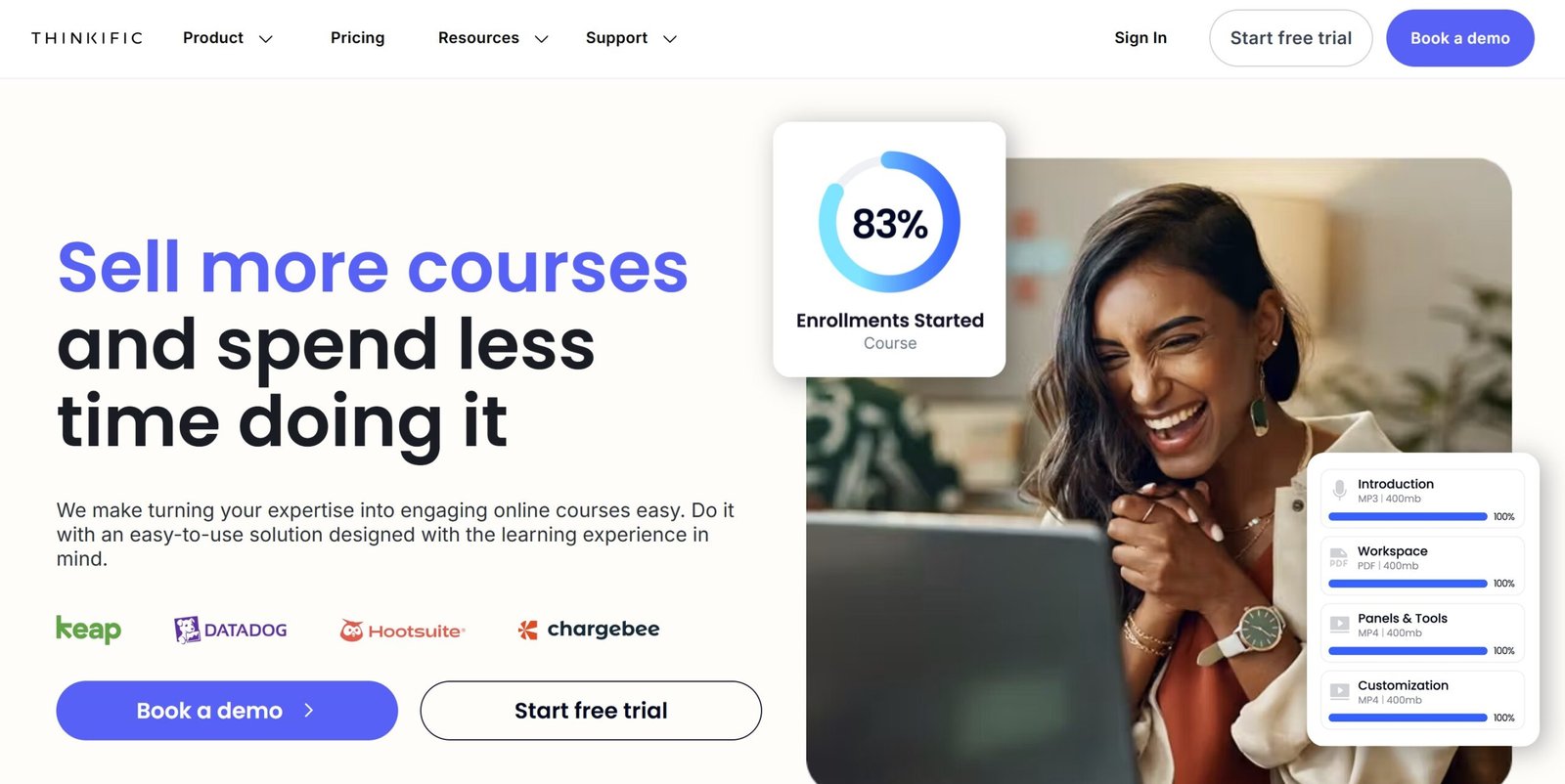 Thinkific gives creators the power to launch and grow a learning business with its strong set of features. It includes video hosting, drip content, assessments, certificates, and a full website builder. Thinkific also shines in student management and offers more layout customization than Teachable.
It integrates well with tools like Mailchimp, Zapier, and payment processors like Stripe. While its built-in email marketing is limited, it’s ideal for creators who want full control of their student journey.
Thinkific gives creators the power to launch and grow a learning business with its strong set of features. It includes video hosting, drip content, assessments, certificates, and a full website builder. Thinkific also shines in student management and offers more layout customization than Teachable.
It integrates well with tools like Mailchimp, Zapier, and payment processors like Stripe. While its built-in email marketing is limited, it’s ideal for creators who want full control of their student journey.
- Great for: Educators, coaches, and professionals building scalable academies
- Pros: Free plan, customizable course player, solid integrations
- Cons: Weak email marketing capabilities
- Design Quality: More layout flexibility and section editing than most competitors
- UI/UX: Polished interface, beginner-friendly with advanced options under the hood
Podia
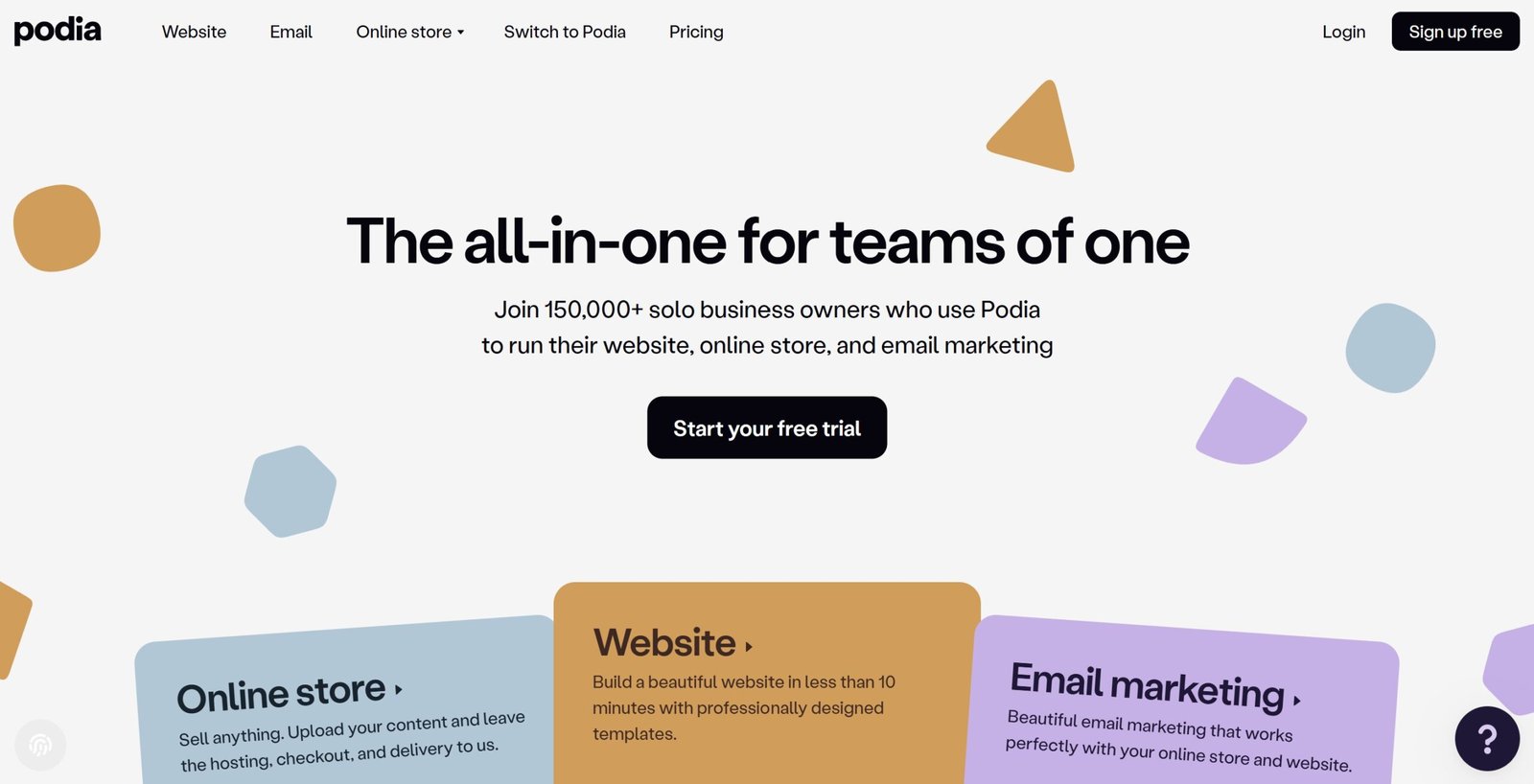 Podia is an all-in-one platform that goes beyond just online courses—it allows creators to sell memberships, digital downloads, and webinars too. One of its strongest selling points is its intuitive dashboard that keeps everything in one place: email, products, and customer messaging.
Podia is an all-in-one platform that goes beyond just online courses—it allows creators to sell memberships, digital downloads, and webinars too. One of its strongest selling points is its intuitive dashboard that keeps everything in one place: email, products, and customer messaging.You don’t need external tools like ConvertKit or Mailchimp to get started, which is a big bonus for beginners. Podia also supports live chat for engaging directly with students. While its customization options aren’t as flexible as Thinkific’s, it’s great for creators who want simplicity without sacrificing power.
- Great for: Digital creators offering multiple types of products
- Pros: Built-in email and checkout, user-friendly dashboard, no transaction fees
- Cons: Less flexible design templates compared to other platforms
- Design Quality: Clean and minimalist design with modern aesthetics
- UI/UX: Exceptionally easy to navigate with zero technical learning curve
Best Video & Presentation Tools
Loom
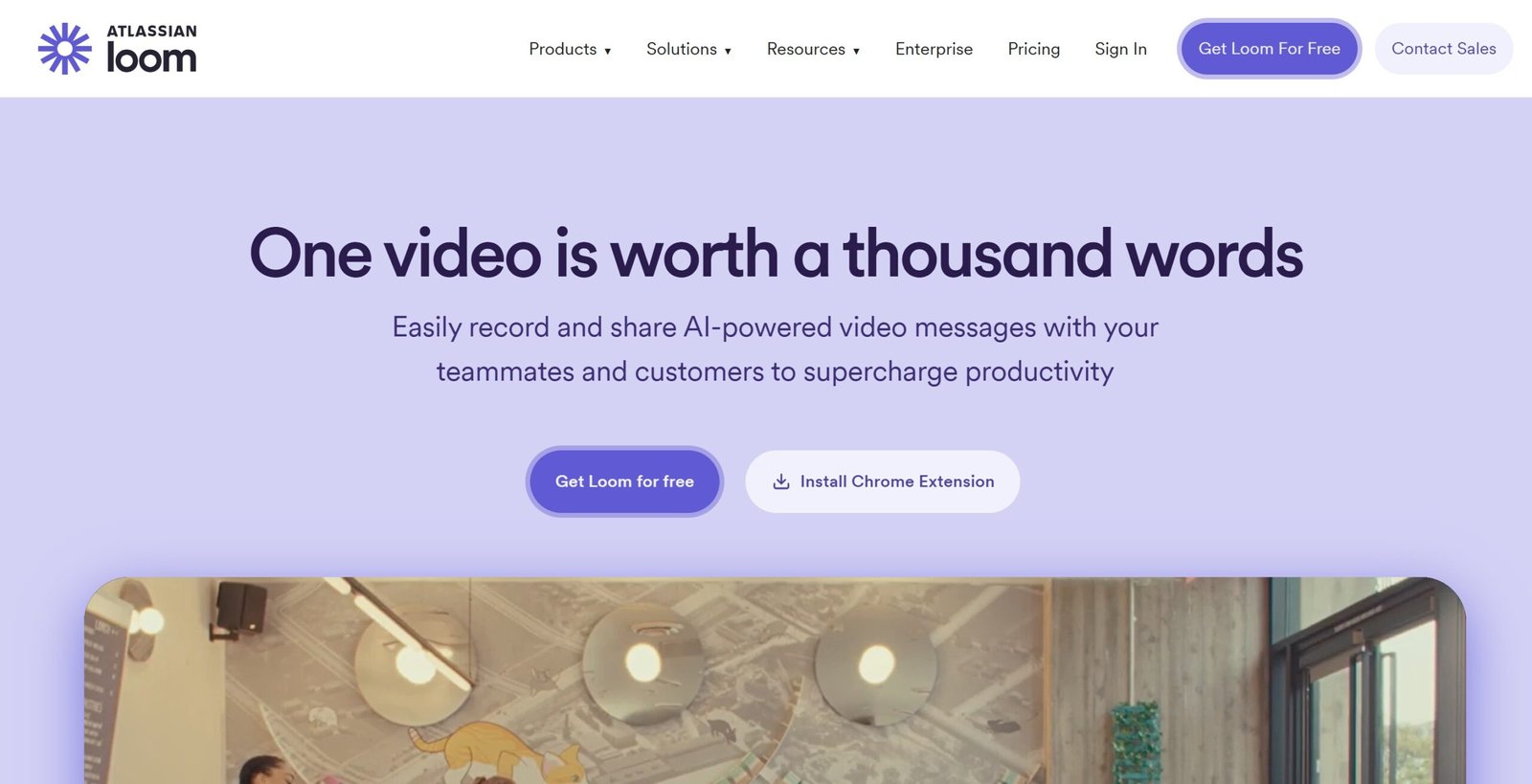 Loom is the go-to tool for course creators who need to record videos fast without sacrificing quality. With Loom, you can record your screen, camera, or both simultaneously, making it perfect for tutorials, onboarding videos, and personal introductions within a course. You can instantly share links to your videos, which is ideal for communicating with your students or team in real-time.
Though it doesn’t offer the editing depth of Camtasia, Loom’s strength lies in its simplicity and cloud-based functionality.
Loom is the go-to tool for course creators who need to record videos fast without sacrificing quality. With Loom, you can record your screen, camera, or both simultaneously, making it perfect for tutorials, onboarding videos, and personal introductions within a course. You can instantly share links to your videos, which is ideal for communicating with your students or team in real-time.
Though it doesn’t offer the editing depth of Camtasia, Loom’s strength lies in its simplicity and cloud-based functionality.
- Great for: Creating quick and engaging course content or updates
- Pros: Browser-based, easy to use, fast sharing, HD recording
- Cons: Basic editing tools, less control over file export
- Design Quality: Clean interface with modern icons and intuitive layout
- UI/UX: Seamless and user-friendly—designed for busy creatorsLoom allows you to quickly record course content, onboarding tutorials, and support videos using your webcam and screen.
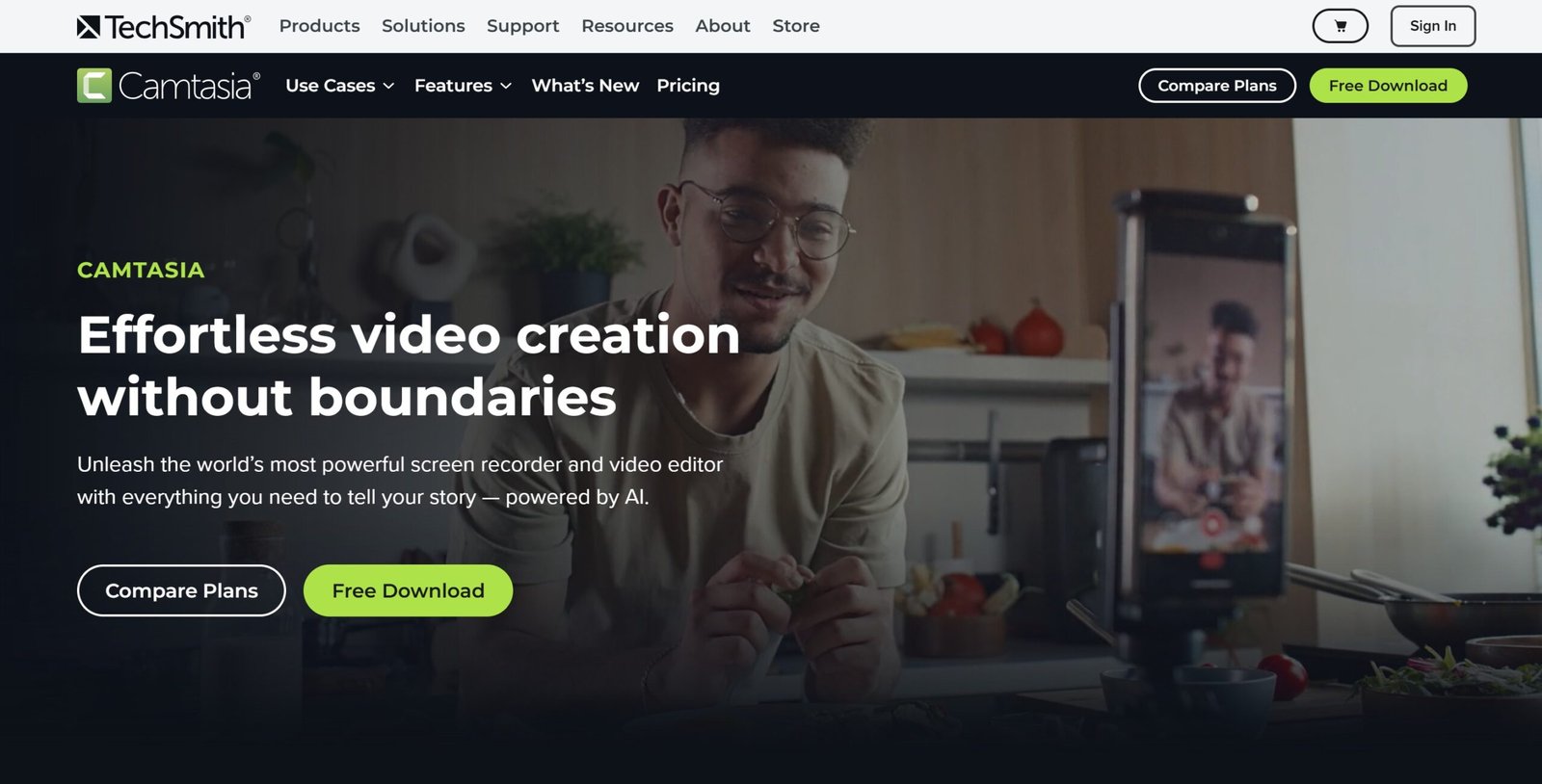 Camtasia is a professional-grade screen recording and video editing software designed for educators and online course creators who want their video lessons to stand out. It offers powerful editing tools like animations, transitions, and callouts. You can record from your screen, webcam, or import video content and add layers of visual polish.
Camtasia is a professional-grade screen recording and video editing software designed for educators and online course creators who want their video lessons to stand out. It offers powerful editing tools like animations, transitions, and callouts. You can record from your screen, webcam, or import video content and add layers of visual polish.While it requires a one-time purchase and has a slight learning curve, Camtasia is a long-term investment in video quality and course professionalism.
- Great for: Creators producing structured and highly polished video courses
- Pros: Advanced editing suite, captions, annotations, interactive quizzes
- Cons: One-time license cost, more complex than basic tools
- Design Quality: Polished interface, industry-standard production features
- UI/UX: Comprehensive and scalable for growing video content needsCamtasia is a professional-grade screen recorder and video editor in one. It's ideal for polished course content.
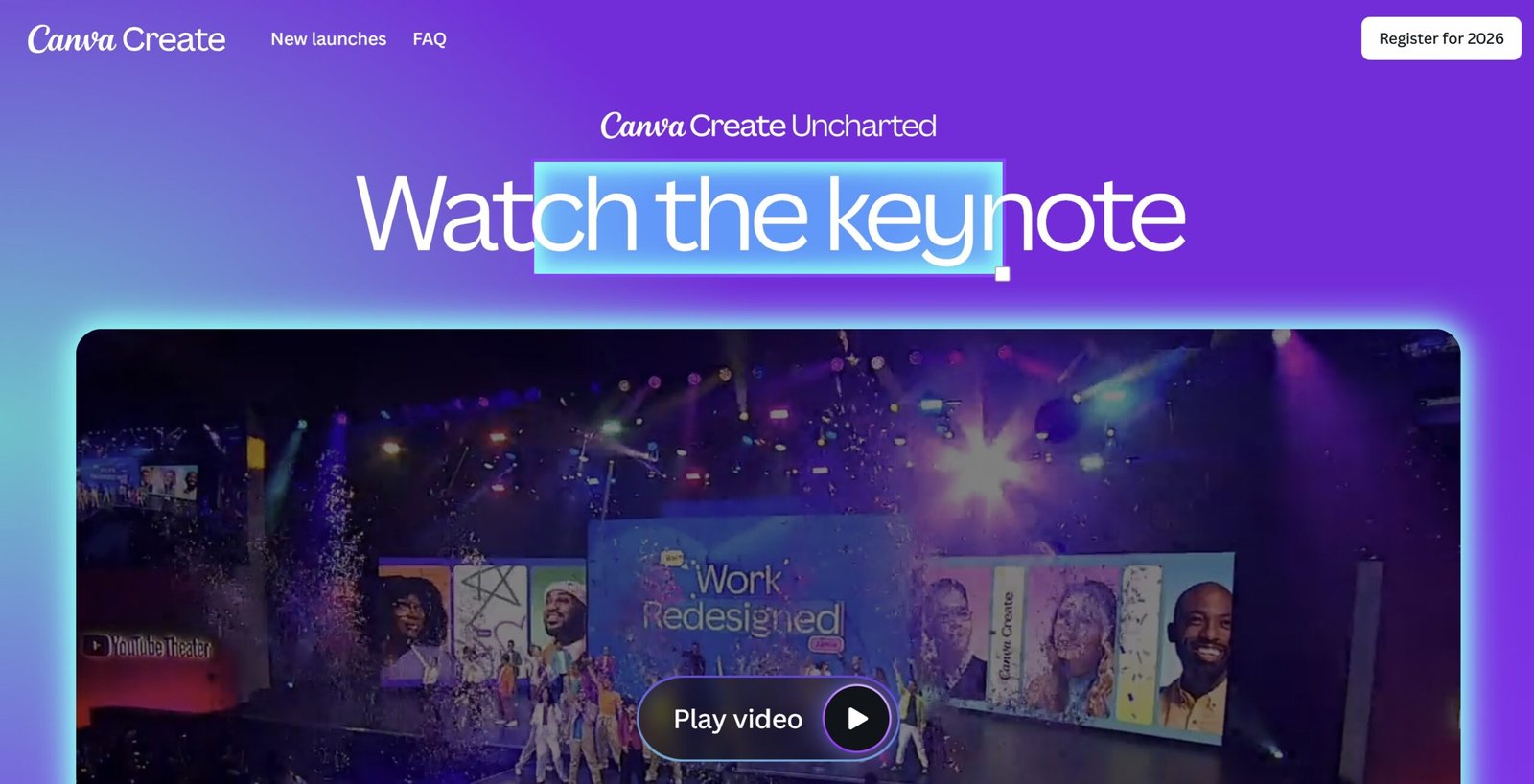 Canva Pro is one of the easiest and most powerful tools for course creators to produce beautiful visuals—no graphic design background required. You can use it to create slide decks, workbooks, downloadable PDFs, social media promos, and course thumbnails. With thousands of templates, fonts, and stock images, it saves countless hours.
It’s especially valuable for consistency in branding across your course materials. While it’s not suited for advanced design projects, Canva Pro is perfect for creators who want design freedom without complexity.
Canva Pro is one of the easiest and most powerful tools for course creators to produce beautiful visuals—no graphic design background required. You can use it to create slide decks, workbooks, downloadable PDFs, social media promos, and course thumbnails. With thousands of templates, fonts, and stock images, it saves countless hours.
It’s especially valuable for consistency in branding across your course materials. While it’s not suited for advanced design projects, Canva Pro is perfect for creators who want design freedom without complexity.
- Great for: Designing course materials, thumbnails, PDFs, social media assets
- Pros: Huge template library, drag-and-drop interface, brand kits
- Cons: Basic animation and vector design tools
- Design Quality: Sleek output and visually appealing templates
- UI/UX: Incredibly beginner-friendly with powerful customization optionsCanva Pro helps you create course thumbnails, social posts, slides, PDFs, and workbooks with ease.
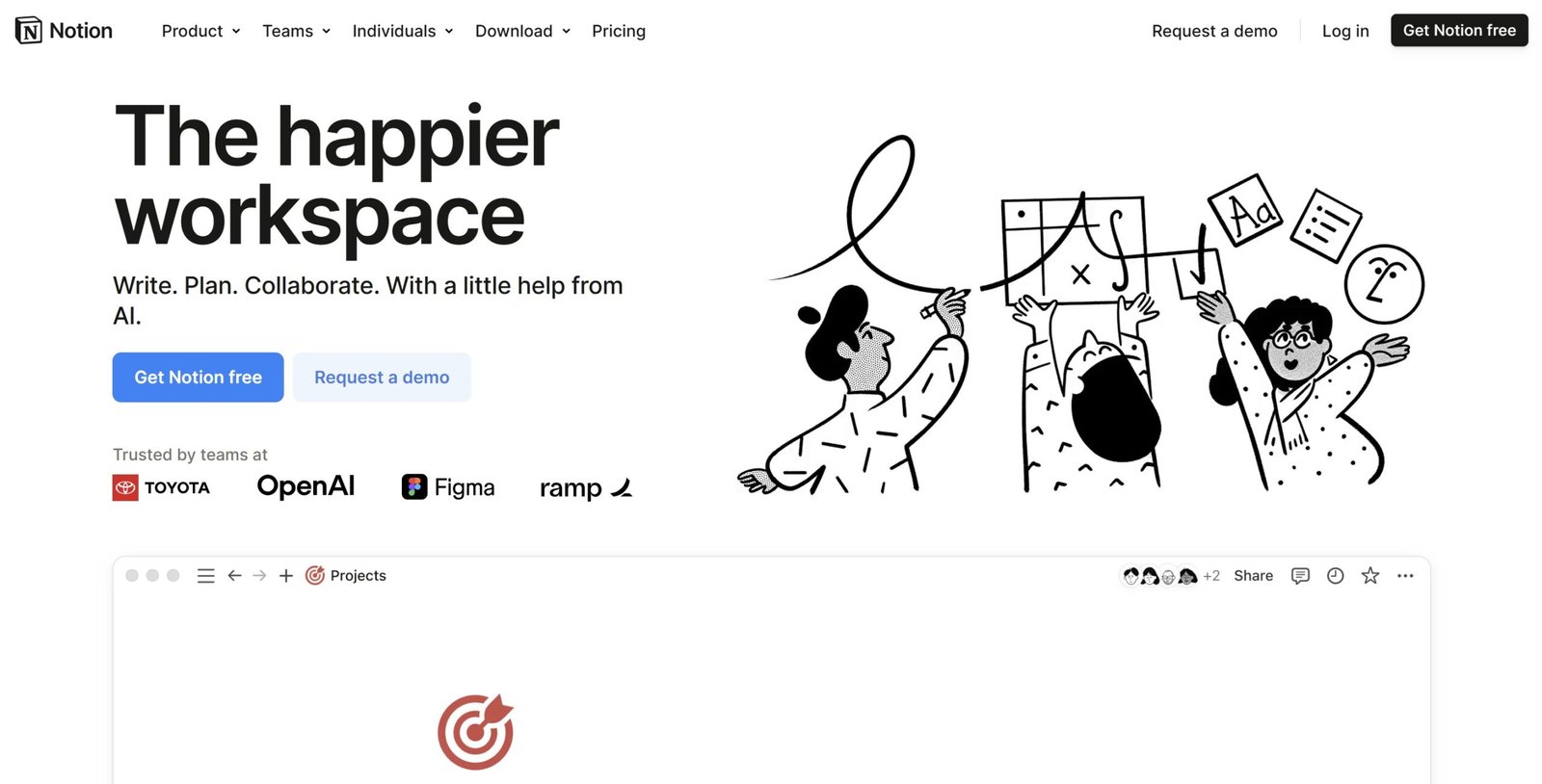 Notion is the digital notebook and productivity platform every course creator should consider. You can map out course outlines, create launch calendars, and manage your team and notes all in one place. Its modular block system allows for flexibility in structuring your dashboard, content ideas, and even personal notes.
Notion is ideal for creators who need a clean workspace to track progress and store resources, but it does take a bit of time to fully grasp its power.
Notion is the digital notebook and productivity platform every course creator should consider. You can map out course outlines, create launch calendars, and manage your team and notes all in one place. Its modular block system allows for flexibility in structuring your dashboard, content ideas, and even personal notes.
Notion is ideal for creators who need a clean workspace to track progress and store resources, but it does take a bit of time to fully grasp its power.
- Great for: Content planning, SOPs, resource libraries, and team collaboration
- Pros: Custom blocks, templates, flexible structure
- Cons: Slight learning curve, can feel too open-ended for some
- Design Quality: Minimalist design with a modern touch
- UI/UX: Once learned, it becomes one of the most flexible tools in your stackPlan course outlines, manage your launch, and organize resources in one workspace.
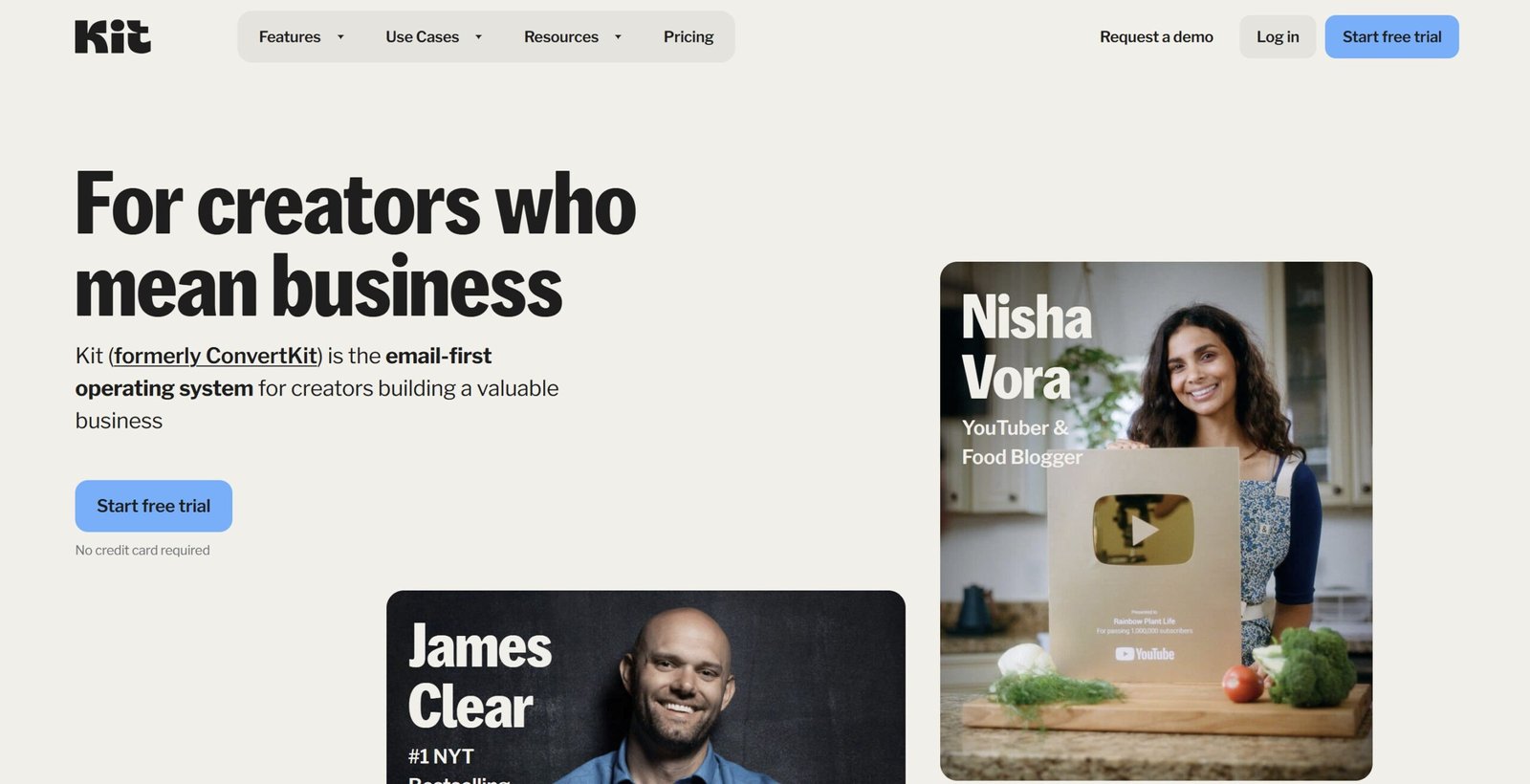 ConvertKit is an email marketing platform made for creators by creators. It shines in automation, letting you tag and segment subscribers based on their actions, which is great for selling courses, upselling products, or onboarding students. Its visual builder makes setting up complex workflows feel simple.
While it offers fewer visual design templates compared to competitors, it makes up for it with better audience management and automation capabilities.
ConvertKit is an email marketing platform made for creators by creators. It shines in automation, letting you tag and segment subscribers based on their actions, which is great for selling courses, upselling products, or onboarding students. Its visual builder makes setting up complex workflows feel simple.
While it offers fewer visual design templates compared to competitors, it makes up for it with better audience management and automation capabilities.
- Great for: Building email lists and nurturing course leads
- Pros: Creator-focused, powerful automations, great customer support
- Cons: Limited drag-and-drop template designs
- Design Quality: Clean and focused more on function than flair
- UI/UX: Simple, visual, and built to grow with your list and course businessConvertKit is built for creators. Easily tag, segment, and nurture your course leads with automations.
Final Tips for Course Creators
- Start simple: Don’t try to use everything at once
- Focus on platforms that support your teaching style
- Use free trials to test tools before investing
- Automate repetitive tasks with integrated features
- Invest in tools that grow with your business
Top Picks for Course Creators:
- Best for Beginners: Teachable
- Most Customizable:Thinkific
- Best Video Editor:Camtasia
- Best Design Tool:Canva Pro
Discover the best tools for online course creators 2025. From Teachable to ConvertKit, explore top digital platforms to plan, record, design, and sell your course online. Beginner-friendly and SEO-ready.
Share this post: on Twitter on Facebook



